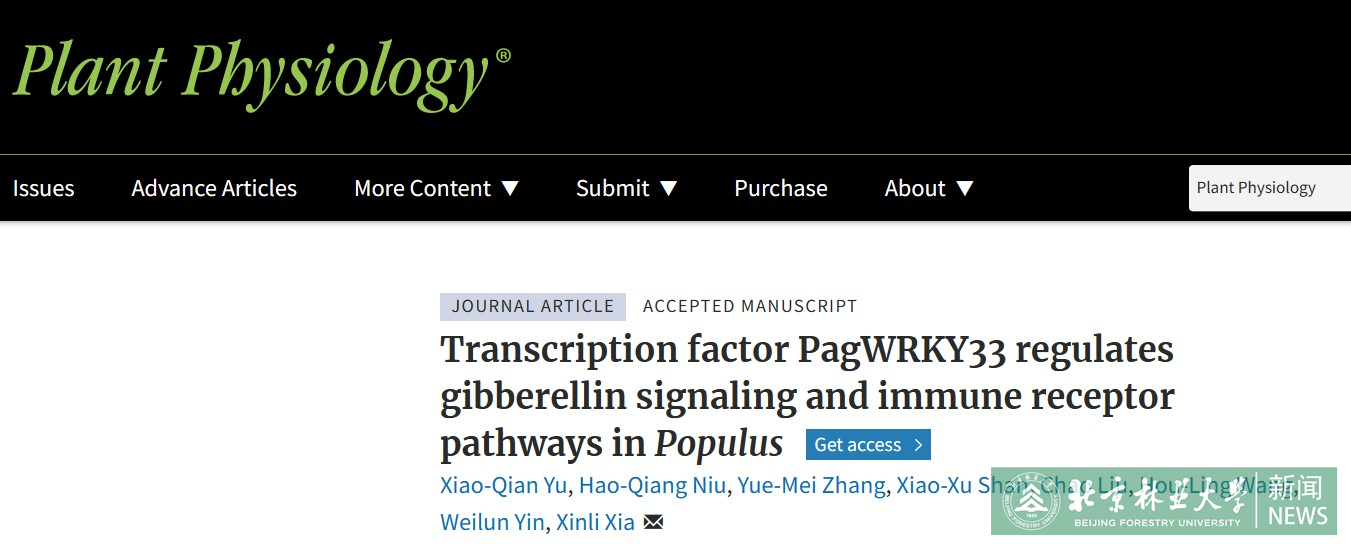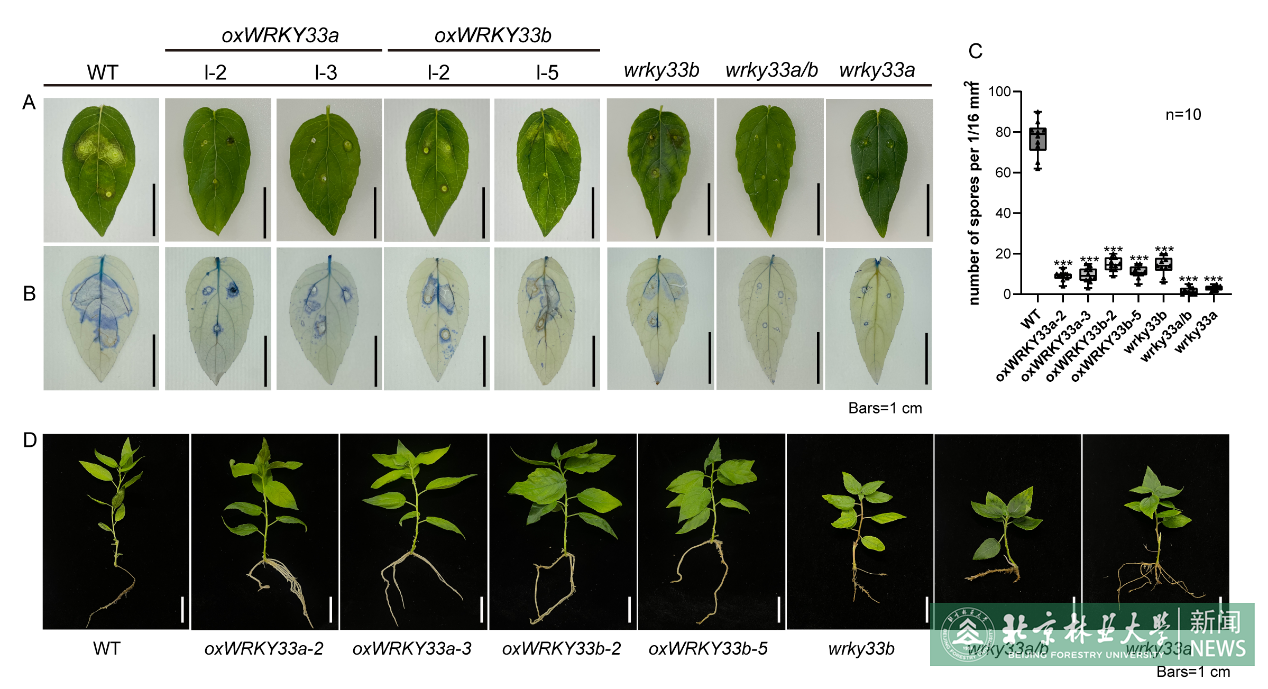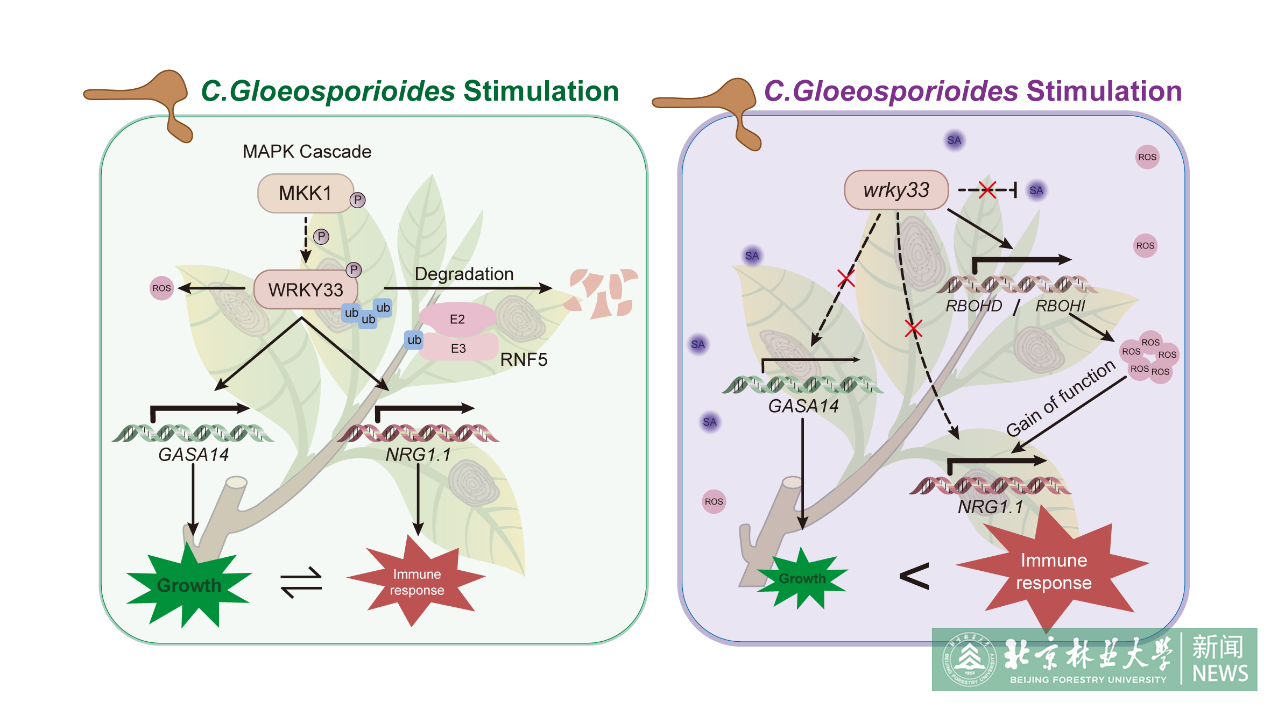Latest news
A research team led by Academician Yin Weilun and Professor Xia Xinli from the School of Biological Sciences and Biotechnology at Beijing Forestry University has recently published a significant paper in Plant Physiology, a journal with an impact factor of 6.60. The study, titled "Transcription Factor PagWRKY33 Regulates Gibberellin Signaling and Immune Receptor Pathways in Populus," reveals how the transcription factors PagWRKY33a and PagWRKY33b orchestrate growth and immune responses in poplar trees. This is achieved through their modulation of gibberellin (GA) signaling and NLR protein pathways.

Enhanced autoimmunity often leads to impaired plant growth and development, and the coordination of immunity and growth in Populus remains elusive. In this study, we have identified the transcription factors PagWRKY33a/b as key regulators of immune response and growth maintenance in Populus. The disruption of PagWRKY33a/b causes growth issues and autoimmunity while conferring resistance to anthracnose caused by Colletotrichum gloeosporioides. PagWRKY33a/b binds to the promoters of N requirement gene 1.1 (NRG1.1) and Gibberellic Acid-Stimulated in Arabidopsis (GASA14)during infection, activating their transcription. This process maintains disease resistance and engages in GA signaling to reduce growth costs from immune activation. The oxPagWRKY33a/nrg1.1 mutant results in reduced resistance to C. gloeosporioides. Further, PagWRKY33a/b is phosphorylated and activated by Mitogen-Activated Protein Kinase Kinase 1 (MKK1), which inhibits Respiratory Burst Oxidase Homolog D (RBOHD) and Respiratory Burst Oxidase Homolog I (RBOHI) transcription, causing ROS bursts in wrky33a/b double mutants. This leads to an upregulation of PagNRG1.1 in the absence of pathogens. However, the wrky33a/b/nrg1.1 and wrky33a/b/rbohd triple mutants show compromised defense responses, underscoring the complexity of WRKY33 regulation. Additionally, the stability of PagWRKY33 is modulated by Ring Finger Protein 5 (PagRNF5)-mediated ubiquitination, balancing plant immunity and growth. Together, our results provide key insights into the complex function of WRKY33 in Populus autoimmunity and its impact on growth and development.


Yu Xiaoqian, a PhD candidate from the School of Biological Sciences and Biotechnology, BFU, is the paper’s first author, with Professor Xia Xinli serving as the corresponding author. Academician Yin Weilun provided comprehensive guidance throughout the research process. The team, including young faculty members Liu Chao and Wang Houling, as well as doctoral student Niu Haoqiang, played crucial roles in advancing the study. Additionally, the research benefited from valuable support from experts at China Agricultural University, the Chinese Academy of Forestry, and Shanghai Normal University and other universities and institutions.
This research was funded by the STI2030-Major Projects(2023ZD04056) and National Natural Science Foundation of China (32071734).
Paper link: https://doi.org/10.1093/plphys/kiae593
Written by Liu Chao, Xia Xinli
Translated and edited by Song He
Reviewed by Yu Yangyang












